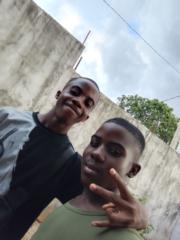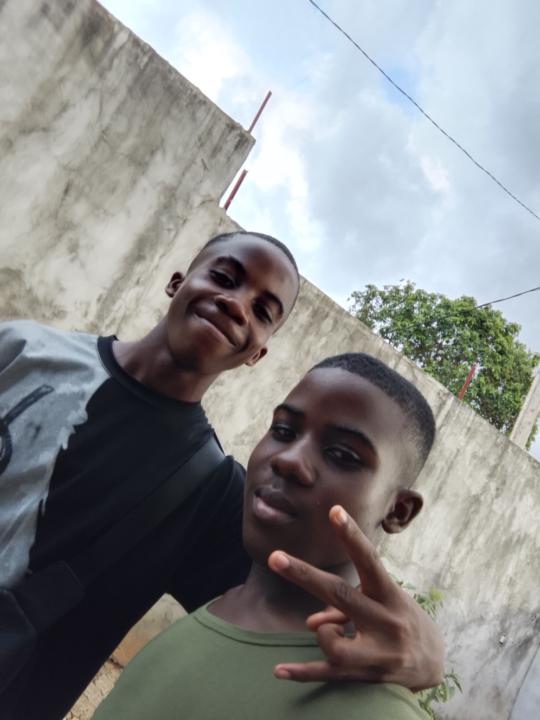Activity
Mon
Wed
Fri
Sun
Jan
Feb
Mar
Apr
May
Jun
Jul
Aug
Sep
Oct
Nov
Dec
What is this?
Less
More
Memberships
Gamify SAT
9.6k members • Free
Max Business School™
261.6k members • Free
DSAT Hackers
3.2k members • Free
The Ivy Wizard Circle (Free)
228 members • Free
11 contributions to The Ivy Wizard Circle (Free)
💸 What Are Target & Safety Schools — And Do They Really Exist If You Need Financial Aid?
Many students ask for suggestions of target and safety schools. So let's clear this up ☺️ ✅ What Are They? - A Target school is a college where your GPA, test scores, and academic profile match the middle 50% of admitted students. - A Safety school is one where your academics are well above the average admitted applicant. 👉 This applies to both U.S. and international students. 👉 The same school might be a Target for one student and a Reach or Safety for another — it all depends on your stats. 👉 To compare stats, check the Common Data Set. Here's a guiding post on how to use it. ⚠️ But What If You’re Applying for Financial Aid? This is where things change. Needing aid can affect your chances — especially at private colleges. Let’s break down the four types of financial aid policies colleges use: 1️⃣ Need-Blind + Meets Full Need - Admissions decisions don’t consider your ability to pay - If admitted, they’ll cover 100% of your demonstrated need 🎓 Examples: Harvard, MIT, Yale, Princeton, Amherst 👉 Very rare 👉 But these schools are ultra-competitive --> if acceptance rate <10%, it's always a Reach, no matter your profile 👉 Some schools are need-blind for U.S. students but need-aware for internationals — check each school’s policy! 2️⃣ Need-Aware + Meets Full Need - Your need can impact your chances - But if accepted, your full need is covered 🎓 Examples: Stanford, Columbia, UChicago, Brown 👉 This is generous — but your need might reduce your odds, especially in borderline cases 👉 For international students who need aid, these often function as Reaches 3️⃣ Need-Aware + Partial Aid or No Aid - Your need can impact your chances - If accepted, funding may still not be enough 🎓 Examples: NYU, BU, USC, many state universities 👉 If affordability is a concern, these are not true Safeties 4️⃣ Merit-Based Aid Only - No need-based aid, but scholarships available for strong academics or leadership
🚨 July College App Check-In: 5 Things You Should be Doing NOW
We’re in the heart of summer—and if you’re a rising senior, now is not the time to relax when it comes to college apps. Here’s what you should have on your radar this month to stay ahead: 1. Finalize Your School List (Strategically) Too many students build unrealistic or overly narrow lists. Your list should be balanced across Dream, Reach, Target, and Safety schools—and reflect your academic profile and personal preferences. 👉 Use the School Research Tracker to go beyond rankings. Look at major offerings, student culture, internship access, and post-grad outcomes. 👉 Don’t fall into the prestige trap—what matters most is fit. 2. Write Your Personal Statement At this point, you should be done brainstorming and deep into drafting. Focus on reflection, not just storytelling. Admissions officers care about how you think and grow, not just what happened. 👉 Not sure if your topic is working? Check this PS post to evaluate it 3. Build a Sharp Activities List Don’t just list what you did—communicate impact, leadership, and personality. 💡 Are you using action verbs? Are your descriptions concrete and comparative? Make sure each entry tells us something admissions officers wouldn’t learn from your transcript. Your activity list is your first impression—make it impressive. 4. Get Ahead on Supplements If you already know which schools you’re applying to early (ED/EA), you should start outlining those supplements. 👉 Some schools have already released their prompts, whereas others come out Aug 1. However, most prompts stay the same year to year. Look at last year’s to start early. 5. Plan Your Rec Letter Asks (if you haven't already) Make your asks ASAP when school starts and provide a thoughtful, detailed brag sheet or resume. You want your recommenders to have time and context to write something strong.
📝 Winning Personal Statement Topic Examples
By now, you’ve seen the mock personal statements I built from student replies (check "One-Stop-Hub" pinned post for links). No drama or resume dumps. Just specific, grounded details reframed with intention. I want to show you a few more essay topics or “hooks” I’ve seen — real ones — that worked exceptionally well. Not because they were flashy, but because they revealed something real and thoughtful about the student. 🔍 Real topics that led to strong personal statements: - A student who always took the longest route home just to look at the same tree - A girl who only felt confident when teaching her little brother how to draw - A boy who panicked every time he had to improvise — but crushed chess because of it - Someone whose dream life was to be a goat farmer… and actually meant it - Someone who took 15 minutes to choose a cookie at lunch — and what that said about decision-making under pressure And some of the weirder ones that still worked beautifully: - A student who became obsessed with label makers - Someone who hoarded email drafts instead of hitting send - A girl who built tiny cardboard cities to calm down - A kid who kept failing at magic tricks - Someone who loved writing fake Yelp reviews None of these stories were “finished.” But the struggle or experience helped develop your character traits (or helped discover them), leading up to who you are today and how it's shaping your future. A personal statement isn’t about telling a perfect story. It’s about selecting something real — then showing how you think, how you process, how you’re evolving. If you’re stuck: Think less about what happened and think more about how it shaped the way you see things. That’s where the essay is. 💬 Got a topic idea you’re playing with? Let me know in the comments! (Or scroll up to the “One-Stop Hub” pinned post to read the full mock essays.)
📌 Mock Personal Statement #3 (Based on Everyday Life)
This is the third narrative in this series—each one imagined from real student replies to 4 simple questions. This narrative is a bit more creative and stylized than the others, to show how even a surreal or poetic angle can carry emotional weight and meaning. It's all about what feels most natural to you. What I pulled from answers: - Childhood habit: Talking to objects about philosophical questions - Personality: Quiet, intelligent - Dream: Professor, Researcher, Lecturer - Future direction I imagined: English & Philosophy major/minor ❗Disclaimer: Everything beyond these details is imagined. And as always, this is just a first draft—specificity, emotional layering, and a stronger take-away will be needed for a final essay. __________________________________ ✏️ Hook At nine, I stood on my bed and explained mortality to the ceiling fan. 🔍 Intro - I’d just learned that stars die. That even the biggest, brightest things end. I stared up and said, “When you stop spinning, will the dust remember you?” - I liked talking to objects that didn’t interrupt. It made space for questions I didn’t know how to say to people. - I wasn’t lonely. Just overflowing—and quiet about it. 💥 Heart / Conflict - At a sleepover, I asked someone, “Do you ever feel like your body’s just your body—but your real self is floating somewhere nearby, watching?” - They froze. Then laughed. That Monday, someone passed me in the hallway and whispered “ghost girl.” - I smiled. Pretended I didn’t care. But that night, I didn’t say anything to the fan. For the first time, it spun without me speaking. - I started shrinking the parts of myself that made people tilt their heads. When someone asked how my weekend was, I said “good.” When I wanted to talk about how rain feels like static, I said “kinda wet.” 🌱 Growth / Resolution - I didn’t stop thinking strangely. I just stopped saying it out loud. - I wrote instead. Voice notes I never sent. A folder called “Conversations That Didn’t Happen.” And eventually, I shared fragments online—in quiet forums, in late-night threads, in posts that disappeared after a few hours. - And people responded. “That made me feel less weird.” “I’ve never heard anyone say it like that.” I realized I wasn’t alone. Just on a different frequency—and maybe part of my job is tuning others into it. I used to think I had to translate myself to fit in. Now I want to build spaces where depth isn’t confusing—it’s invited. - Whether I’m writing, teaching, or building quiet spaces for reflection, I don’t want to flatten weirdness. I want to make it legible—to the right people. - The fan still spins above me sometimes. I still talk to it. But more and more, I talk to people too. And not just when I’ve practiced—but when I need to be heard.
📝 The Common App: How to Write Your Activities List
In our last post, we covered what admissions officers are really looking for in your activities list. Now: how to write it—strategically, clearly, and with impact. 💡 Remember, admissions officers skim this section in seconds—so it needs to be intentional, strategic, and give a clear sense of your strengths and academic direction. Just by reading this list, they should already know what kind of student you are. 🔧 Each Entry Has 3 Parts—Here’s How to Get Each One Right: 1. 🧑💼 Role / Position (50 characters) Tips: - Be specific (not just “member”) - Include leadership + growth using grade level (G9–G12) - Avoid repeating what's already in the organization name ✅ Examples: - President (G12), VP (G11) - Lead Programmer (G11–12) - Founder & Head Instructor ❌ Weak Examples: - Club Member - Volunteer - STEM Club 2. 🏢 Organization Name (100 characters) Tips: - Use full names for external orgs - Clarify if school-specific - Add a quick context note if it’s not well-known ✅ Examples: - STEM Scholars Program (selective research fellowship) - Greenlight Foundation (nonprofit for under-resourced youth) - Debate Team – Lincoln High School ❌ Weak Examples: - STEM Club - Local Nonprofit - Summer Camp 3. ✍️ Description (150 characters) Tips: - Start with a strong action verb - Quantify your impact whenever possible - Show leadership, growth, or initiative - Don’t repeat org name or title - Use abbreviations for well-known terms ✅ Examples: - Launched 8-week coding class for girls; reached 40+ students across 3 schools in under-resourced districts - Led outreach, grew team from 8 to 25; organized fundraiser ($1.2K raised) and regional competition - Analyzed addiction behavior data; co-authored abstract presented at HS Neuroscience Conference (2k participants) ❌ Weak Examples: - I helped out with students and did teaching - We had meetings and discussed STEM topics every week - I attended lab and learned about research methods
1-10 of 11
@ian-langeh-2644
Hi, I'm Ian. A software engineer in the making. I love coding and problem solving as well as meeting new people. I am a big fan of growth.
Active 38d ago
Joined Feb 26, 2025
Cameroon


